- Administrator
- Albums and Singles
 The reappearance of these two unpardonably out-of-print platinum-selling albums recorded in the later years of the R&B group's celebrated 3+3 lineup presents listeners with aural snapshots taken at the twilight of '70s funk and disco. By this time interpersonal tensions in the group and the changing tastes of audiences had begun to affect the sextet, though one could hardly tell given the radioactive funk emitting from these songs.
The reappearance of these two unpardonably out-of-print platinum-selling albums recorded in the later years of the R&B group's celebrated 3+3 lineup presents listeners with aural snapshots taken at the twilight of '70s funk and disco. By this time interpersonal tensions in the group and the changing tastes of audiences had begun to affect the sextet, though one could hardly tell given the radioactive funk emitting from these songs.
By 1978, The Isley Brothers had achieved several prior commercial and critical successes including chart-topping albums like The Heat Is On and Go For Your Guns, as well as the landmark 3+3--the first to feature the unparalleled teaming of singers Ronald, Rudolph, and O'Kelly Isley with musicians Ernie and Marvin Isley and brother-in-law Chris Jasper. Released that year, Showdown could be considered the proverbial "beginning of the end", as the 1980s would prove particularly unkind to the group on multiple fronts, leading to an irresolvable and perhaps inevitable schism between the founders and the younger proteges who updated, revolutionized and ultimately defined its sound. After 1980's Go All The Way, it would take two full decades before The Isley Brothers--finally pared down to Ronald and Ernie, in collaboration with the infamous R. Kelly--would have a platinum album again.
Those performing on Showdown couldn't possibly foresee the difficulties ahead, or at least if they did any such anxiety fails to materialize in the music. As groovy as ever before, Ronald's breathtaking voice leads the band through eight solid tracks, from the sweltering funk of "Rockin' With Fire" to the laidback soul of "Coolin' Me Out". On par with anything George Clinton's Parliament was producing at the time, the fine and funky single "Take Me To The Next Phase" comes across almost as a Sly and The Family Stone homage, purposefully borrowing a lyrical snippet from the latter's classic "Thank You (Falettinme Be Mice Elf Agin)". The title track features Ronald mastering and maintaining his fabulous falsetto while the rock-inflected "Love Fever" gives guitarist Ernie his time to shine, recalling his onetime mentor Jimi Hendrix, who had toured with the band prior to his own massive success. While a good record all around and on its own, in the context of The Isley Brothers' prior discography Showdown passively returns to the well more than the players want to admit, in the vain hope of discovering something different and innovative there.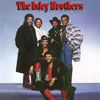 An astoundingly under-appreciated masterpiece, 1980's Go All The Way surpasses the inherent complacency of Showdown and boldly explores a shimmering pop galaxy to the right of its comfort zone. This has much to do with the fact that most of these songs were never originally intended as Isley Brothers material. Rather, as Chris indicates in the booklet, these tunes were written with Ernie and Marvin--growing disgruntled with the business end of things--with the intent of establishing a splinter group featuring those three younger members. (That notion would prove prescient when, in 1984, Isley-Jasper-Isley released the first of three albums.) Indeed, the song had been recorded and were ready for vocals when, at the urging of the two blood brothers, the trio presented it to the singers who decided it was right for a proper Isley Brothers album. Though Chris wrote "Here We Go Again" with his own voice in mind, hearing Ronald sing so exquisitely here I could hardly imagine anyone else doing the song justice.
An astoundingly under-appreciated masterpiece, 1980's Go All The Way surpasses the inherent complacency of Showdown and boldly explores a shimmering pop galaxy to the right of its comfort zone. This has much to do with the fact that most of these songs were never originally intended as Isley Brothers material. Rather, as Chris indicates in the booklet, these tunes were written with Ernie and Marvin--growing disgruntled with the business end of things--with the intent of establishing a splinter group featuring those three younger members. (That notion would prove prescient when, in 1984, Isley-Jasper-Isley released the first of three albums.) Indeed, the song had been recorded and were ready for vocals when, at the urging of the two blood brothers, the trio presented it to the singers who decided it was right for a proper Isley Brothers album. Though Chris wrote "Here We Go Again" with his own voice in mind, hearing Ronald sing so exquisitely here I could hardly imagine anyone else doing the song justice.
Incredibly, discord and the threat of secession by the key songwriting team produced an authentic record both like and unlike its predecessors. The funk hasn't dissipated in the slightest, but there's a glossy sheen that makes everything beautiful. "Say You Will" could have been recorded five years earlier, but not in this elegant fashion. Here, vocal harmonies soar over and alongside Ernie's soloing, with one of Marvin's seismic basslines balancing out Chris' keyboard leads. Both "Pass It On" and closing cut "The Belly Dancer" capitalizes on the final days of disco with a dancefloor-friendly beat and the latter showcasing Ronald's breathy, faux-orgasmic vocal. "Don't Say Goodnight (It's Time For Love" is a rare downtempo cut in the quiet storm tradition, with Chris' delay-drenched synth blips adding an extra bit of dreaminess to the atmosphere fostered by Ronald's seductive tones.
Alongside the requisite liner notes mandatory in any decent reissue, both albums feature full lyrics as well as Chris Jasper's aforementioned commentary in their accompanying booklets. These features add to the excitement of delving into these reissues. Not to discount the work of the rest of the 3+3 lineup, I have to point out that Ronald Isley is a national treasure, and these two records demonstrate his worth. He is perhaps the greatest soul singer alive today, which makes his continued incarceration for a 2006 tax evasion conviction all the more tragic.
samples:
From Showdown:
From Go All The Way:
Read More
- Administrator
- Albums and Singles
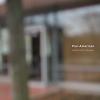 Mark Nelson’s post-Labradford work has always done more for me than Labradford itself. This is not a disparaging comment on Labradford but a testament to how good Nelson has become. With each Pan•American release, Nelson has further crafted his distinctive and often copied style. These are not just interesting sounds or clever use of musical form, the music goes beyond that (and any "post-rock" clichés) to become a genuinely moving experience.
Mark Nelson’s post-Labradford work has always done more for me than Labradford itself. This is not a disparaging comment on Labradford but a testament to how good Nelson has become. With each Pan•American release, Nelson has further crafted his distinctive and often copied style. These are not just interesting sounds or clever use of musical form, the music goes beyond that (and any "post-rock" clichés) to become a genuinely moving experience.
There is a lot of space in this album, both in terms of the music being uncluttered and the imagery conjured up by the titles. The track titles make up an extract from a letter from Dr. Robert Goddard to H.G. Wells and concern the idea of space travel which brings to mind the album’s title and images of glistening white space shuttles hurtling through space. However, this is not cosmic music but music made from the ground looking up, earthly and hopeful. Other artists have explored the psychedelic aspects of space and music but Nelson has created something different, something reassuringly human. Due to this, White Bird Release is one of the strongest albums that Nelson has contributed to.
The throbbing tremolo effect on the guitar "There can be no thought of finishing" gives the music a marine-like feeling, I feel like I am bathed in warm brine and floating gently in a reverie. These sorts of feelings are precisely what I expect from Pan•American and the rest of the album is no disappointment. Every single piece is thought provoking and emotion evoking. I hate to use the old "soundtrack for a movie never made" line but the music certainly is cinematic, although it is hard to say what kind of film it would accompany.
The ebowed guitar and whispered vocals of "Both literally and figuratively" are at the same time unassuming and beautiful. The music is like a smoke that dissipates when something else distracts the listener; it is easy for White Bird Release to fade away into the background. Yet this is what makes the album so strong; it is nice audio wallpaper but when I sit down and listen properly, it is some of the best realized music I have heard. The finest moment is saved until last with "In a letter to H.G. Wells, 1932." The understated rhythm pulls us in before being obliterated by a shimmering noise that sounds like an electric organ with all of its keys pressed down at once. It is simple and it is wonderful.
And simple and wonderful is the best way to sum up White Bird Release. It feels so completely relaxed and comfortable, as if the music just fell out of a dream.
samples:
- Both literally and figuratively
- There is always the thrill of just beginning
- In a letter to H.G. Wells, 1932
Read More
- Administrator
- Albums and Singles
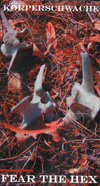 I cannot think of a single artist that is afflicted with such a relentless torrent of inspiration and amazing ideas that a triple album is warranted. Texas's Korperschwache have not changed my opinion on this issue, but they have made a surprising successful, varied (particularly for a noise band with a Holocaust-derived moniker that names songs after H.P. Lovecraft monsters), and listenable effort nonetheless; especially when considering that the band began in 1995 with the intention of producing "blown-out junk noise hell built on the maxim that you can never be too loud or too obnoxious."
I cannot think of a single artist that is afflicted with such a relentless torrent of inspiration and amazing ideas that a triple album is warranted. Texas's Korperschwache have not changed my opinion on this issue, but they have made a surprising successful, varied (particularly for a noise band with a Holocaust-derived moniker that names songs after H.P. Lovecraft monsters), and listenable effort nonetheless; especially when considering that the band began in 1995 with the intention of producing "blown-out junk noise hell built on the maxim that you can never be too loud or too obnoxious."
Peasant Magik
Korperschwache (which means "organic decay") is essentially the solo project of a fellow named RFK, although he is aided by a frequent female collaborator named Doktor Omega on percussion. RFK is something of an underground institution, as he publishes the long-running e-zine The One True Dead Angel and fronted the now-defunct Autodidact (who have been favorably compared to My Bloody Valentine, Swans, and Skullflower). I have not heard Autodidact yet, but I am intrigued, as RFK's guitar work on this album (despite being deliberately destroyed and buried in noise) occasionally betrays an innovative command of unconventional and dissonant harmony.
Fear The Hex is divided into three (ostensibly) themed albums: Black Canyon Drone, Death Disco, and Dissonance And Submission. Black Canyon Drone is, as expected, largely drone-themed. However, there are several percussive tracks included also (thematic purity is an early casualty).
Korperschwache's source material consists solely of enthusistically mutilated electric guitar sounds. I may be wrong, but I don't think RFK uses a computer for sound manipulation at all. Korperschwache has a very lo-fi aesthetic and RFK's unique sound seems to originate from a mixture of effects pedals and overloaded signals. The multiple tracks of heavily distorted and ruined guitars create a complex rumbling roar, which is well suited for drone music. There is some filler here, but usually (as on "Creeping Interstellar Space") RFK artfully stacks clashing notes together to create some cool oscillations and an atmosphere of vague menace.
Death Disco is the most beat-oriented of the three cassettes and would be uniformly excellent if it weren't for one puzzling stylistic quirk: several of the (surprisingly structured and melodic) songs sound like unfinished sketches of unwritten Jesu tracks ("The White Room," for example). It is maddening and confounding that RFK combined thick, doom-y chord progressions and excellent repetitive, quasi-mechanized beats, then stopped and moved onto the next song. If he had focused on fleshing these tracks out, rather than on assembling three goddamn albums of material, Fear The Hex could have been quite an amazing album. That said, I love Doktor Omega's drums, particularly on the glacially unfolding drone piece "The Soothing Call of Nature's Existential Hum." Actually, that track is excellent all-around; RFK augments his usual low-end avalanche with some psychedelic strangled-sounding weirdness in the upper octaves. It is also worth noting that some of the tracks have rhythms that sound bizarrely Caribbean or Brazilian (albeit slowed-down), which infuses the creeping sludge with a somewhat surreal and playful feel. I think I even heard a bongo on one track.
I am unsure what distinguishing trait Dissonance And Submission is supposed to possess to separate it from the other two cassettes, as it seems to mine the same territory. The opening track ("Targeted For Massive Defoliation") is one of RFK's more successful droning roars and is unique here for having shifting drums that attempt to give the song varying dynamics. Perhaps the drums were added after the guitar in this one instance. I'm not sure if I like this innovation though—I am pretty closed-mindedly infatuated with the relentless, mechanical repetition of the other rhythmic tracks.
Korperschwache generally have a impressively heavy, textured, and unique sound—I found myself enthusiastically getting into this at times. For that I am quite grateful. My walkman broke while I was in NYC this week (during Black Canyon Drone) and I had to scour the city's worst electronics stores to find a new one so I could listen to the rest. Consequently, I would have been apoplectic with rage if this album had not been so frequently compelling. There's way too much material here for any normal person to process and fully enjoy though, and too many prematurely aborted good ideas too. I hope RFK continues to evolve (even after fourteen years) as he has certainly drifted a long way from his original inspirations of Whitehouse and Merzbow. If Korperscwache's next album is shorter, less claustrophobic and space-less, and more adventurous in its departures from the default Korperschwache song structure, I will probably love it. (Fear The Hex is a cassette-only limited edition of 100.)
Samples:
- Creeping Interstellar Xenophobia
- The White Room (is where the beatings take place)
- Targeted For Massive Defoliation (agent orange)
Read More
- Administrator
- Albums and Singles
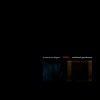 This release from eminent sound ecologist Francisco Lopez and Michael Gendreau—member of Crawling With Tarts (1983-1998)—is less a collaboration between the two than a pairing together of similar pieces culled from recordings they each made in the Far East. Lopez created his tracks from original recordings of machinery in Singapore, China, Taiwan, and Japan, whereas Gendreau's microphone captured sounds from inside the factories of Taiwan and Malaysia. Together as a two CD set, the musical pieces presented by each artist are quite complimentary of each other.
This release from eminent sound ecologist Francisco Lopez and Michael Gendreau—member of Crawling With Tarts (1983-1998)—is less a collaboration between the two than a pairing together of similar pieces culled from recordings they each made in the Far East. Lopez created his tracks from original recordings of machinery in Singapore, China, Taiwan, and Japan, whereas Gendreau's microphone captured sounds from inside the factories of Taiwan and Malaysia. Together as a two CD set, the musical pieces presented by each artist are quite complimentary of each other.
Michael Gendreau starts the first disc off with "T921." Quiet at first, volume shifts occur in a manner that resembles walking up a long flight of steps. A landing is reached the volume steadies out for a rest. Subtle oscillations buzz, panning between the speakers, before dropping back down to the previous level. It's a chilling effect. A brief melody appears out of nowhere, followed by a voice on a loudspeaker, before it recurs. What follows appears to be the shuffling of feet and the muffled voices of the workers. A loud fizzing ring takes over and continues unabated, until, with a sudden alarm, something slams; and then with another slam the ringing reasserts itself, all enveloping. The beep-beep-beep of a truck being backed into a dock is heard and it ends with the sound of a door closing and the bell ring of someone summoning a clerk.
Sounds of clunking machines are rarely as engaging as they are on Lopez’s "D156." The beauty to be found in these oil greased behemoths is in the lulling tintinnabulation and rattle of the metal. It's an immersive sound world, hypnotic, and locked in a groove of time. Screeching whines creep in over the top of deep thumps. Steam hisses as the pressure starts to build. All is released in a torrent of a fluttering staccato.
“D138” sees Lopez opening the second disc with low end pulsations that rumble the speakers. Hiss slithers to the foreground; it seems to be a primary ingredient for both artists. The feeling is like a valve about to burst as grumbling motors shake. Abrupt transitions are the norm on this track: a wavering tone of uncertain origin pours out over a desolate warehouse floor. Ruffles of white noise criss-cross back and forth across the stereo field. The engines must have been reorded from far away, as it seems to resonate down a long corridor. The sounds leaking out are calming, something I didn’t expect, but it doesn’t last. Underneath the dust an ominous wind stirs. The fuzz shifts, growing louder, more manic, more frantic, giving way to chattering tics, bleeps, scratching and rustling. Again, clean breaks are made. My speakers have become vacuum cleaners sucking me into a long silence.
Persisting for a few minutes this silence is cleansing for the auditory palette. Michael Gendreau breaks it with a scream on “M928.” A trill buzzes with abject treble turning into an abysmal bass. It might as well be emerging from my third eye: that is where I feel it, in the center of my forehead. Workers are heard talking and walking around, using air tools and power electronics. I hope they are wearing ear protection. Luckily for me the volume fluctuates. The extremely loud parts do not outstay their welcome. Strange tones and percussive textures blanket the rest of the piece in their resonant glow.
Part of the fun, as a listener, with these types of compositions made from industrial field recordings, is that it is left up to me to interpret and intuit what exactly it is going on. I will probably never know whether or not I am right or wrong in my assumptions about a given sound source. In the end I take them of their own accord, enriched by my experience of arm chair traveling, an eager to journey further. Lopez and Gendreau are invaluable tour guides.
samples:
Read More
- Administrator
- Albums and Singles
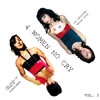 This collection featuring four artists from different countries is strung together by the conceits that all of the artists are relatively unknown and all of them are women. The disc is agreeably diverse, taking turns through lo-fi pop, fuzzy electronics, and odd singer-songwriter territory.
This collection featuring four artists from different countries is strung together by the conceits that all of the artists are relatively unknown and all of them are women. The disc is agreeably diverse, taking turns through lo-fi pop, fuzzy electronics, and odd singer-songwriter territory.
Colombian musician Lucrecia kicks things off with four tracks of simply stated but effective pop music. I'll admit that the rudimentary drum machine and rigid piano chords that opened the first song had me thinking that I would hate the intentionally stiff aesthetic, but by the time the song got rolling, I was with it. "De Vez En Cuando" is particularly effective as it builds with guitar and vibes over a looping handclap and snap rhythm. All of The Sound of Lucrecia's work is lo-fi, but that home-made sound adds to its intimate appeal.
The compilation skips to Greece with Manekinekod, whose clicks and dub bursts wouldn't sound out of place in the ~scape catalog. Manekinekod uses fragments of melody to suggest a mood, and it works well when she mixes the scattered rhythms with voices and samples. While I feel like I've heard a lot of music like this before from Bip-Hop and ~scape, a few of these tracks stood out enough that I'd be interested to catch Manekinekod's act live, or to pick up a full length.
American Julia Holter takes a detour into the disc's most challenging quadrant. Her work is playful and seems to incorporate toy instruments and fresh melodic turns, though I found it a little too dissonant to be as fun as she probably intended. Again, as on Lucrecia's first song, Holter works with a forced stiffness and an outsider-music type of production style that rubs me the wrong way. I think she can make some of this sound better, but the point is for it to sound rough and untrained and I'm just not buying it.
The disc ends in Brazil for four tracks from Liz Christine who combines an alarming number of animal sounds with bitcrushed rhythms, field recordings, and spoken word. While this is probably the least approachable set of songs on the album for a pop music purist, I found the looped and layerd nature of the work to be consistently interesting. I can't say that I know what she's doing with all of the cats and frogs and other animal sounds, but my dogs certainly got a kick out of hearing those samples coming from the speakers. I don't know that I'll revisit these compositions all that often, but I did really enjoy "Dreaming" with its incongruous mix of dog barks, duck honks, and nearly danceable beats.
Read More
- Administrator
- Albums and Singles
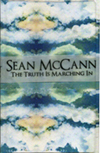 Although the Roll Over Rover label co-head Sean McCann is a relatively recent addition to the underground experimental scene, he has already carved out a name for himself with fully realized releases on a number of labels. On this album—loosely based on Albert Ayler's work of the same name—McCann uses bowed mandolin, processed banjo, vocals, and a plethora of other techniques to create a work that doesn't so much pay homage to the jazz legend's work as take off from where Ayler's spiritual approach left us.
Although the Roll Over Rover label co-head Sean McCann is a relatively recent addition to the underground experimental scene, he has already carved out a name for himself with fully realized releases on a number of labels. On this album—loosely based on Albert Ayler's work of the same name—McCann uses bowed mandolin, processed banjo, vocals, and a plethora of other techniques to create a work that doesn't so much pay homage to the jazz legend's work as take off from where Ayler's spiritual approach left us.
If McCann's sound is defined by his tools, then his vision is shaped by his approach. Improvisatory as it may be—and surely it has all of the energy and excitement for which spontaneous music allows—McCann's real strength is in his ability to balance this chaotic and kaleidoscopic musical landscape without ever losing a sense of compositional control. The opening piece (all are untitled) opens with an explosion of processed strings and thick synthesized drones that leave no time for mental adjustment; yet McCann's sound is so well honed that the result is exhilarating rather than overwhelming. As everything careens around in celebratory fits, hollow rhythmic pulses echo beneath, giving amorphous shape to the loose fitting flow of the work.
Elsewhere, McCann explores near post-rock territory, bringing in slow and steady bass and drum work beneath drifting vocals and aimless string moves that bend and sway their way toward some beautiful nowhere. That the following side closing track fits right in despite eliminating any overt use of electronics is yet another display of the close attention paid to these works; the lilting bowed string melodies continue developing the same mood without rehashing the tactics that have already proved to work at achieving it.
The second side of the tape opens with the most overtly Aylerian work on the date, though nothing instrumentally would draw that comparison here. Plucked strings mingle between huge swathes of bubbling, choral drone that recall the same cathartic emotional release of Ayler without even a hint of saxophone to be found. That it comes to a stuttering and dark end is perhaps poetically in line with Ayler's own tragic death, but more importantly it infuses the work with a dark shadow that is otherwise largely missing from the rest of the tape. Parts even approach a level of Skaters-like murk, babbling about in confusion that seems the anarchic antithesis to the work's cleansing beginnings.
The next piece's clattered, gamelan-like strings draw on even more comparisons but again, McCann's distinct sound is fully on display. That he is able to garner this much excitement out of sounds too often used for tired ends is impressive in itself, but it's the bigger picture that is this music's greatest asset. No mere collection of "experimental" or "drone" works, the release sees an up-and-coming artist continuing to pursue an already mature musical stance. And that's not something that happens often enough at all.
samples:
Read More
- Administrator
- Albums and Singles
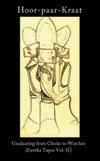 With well over 20 releases to its name, Anthony Mangicapra's Hoor-paar-Kraat project has taken on many guises over the years, containing no less than 14 different collaborators over the course of its varied discography. No matter the personnel though, the unit has consistently pushed at the boundaries between drone, noise and musique concrète to masterful effect. Here, Mangicapra teams up with four cohorts and comes up with a beautifully consistent and thematically realized piece. That it has been printed in a relatively large run (for this sort of release anyway...) of 200 is good news, but unfortunately not so good that anyone who wants one can afford to bide their time should they desire a copy. Such is the tape world I suppose; c'est la vie.
With well over 20 releases to its name, Anthony Mangicapra's Hoor-paar-Kraat project has taken on many guises over the years, containing no less than 14 different collaborators over the course of its varied discography. No matter the personnel though, the unit has consistently pushed at the boundaries between drone, noise and musique concrète to masterful effect. Here, Mangicapra teams up with four cohorts and comes up with a beautifully consistent and thematically realized piece. That it has been printed in a relatively large run (for this sort of release anyway...) of 200 is good news, but unfortunately not so good that anyone who wants one can afford to bide their time should they desire a copy. Such is the tape world I suppose; c'est la vie.
Consistent with the standard working mode of the band, this release tip-toes around the darker precipices of its various genre dabblings without ever submerging into total blackness. Spread across the six lengthy tracks are thick and tactile dronescapes, disturbed vocal babblings, and creepy guitar dirges atop squawking synthesizer cries. This dark and mysterious atmosphere, consistent with the group's enigmatic existence, is hardly a dip in the relatively safe waters of the overdone doom and gloom rock pursued by so many though; Hoor-paar-Kraat merely use this as a starting point from which to uncover deeper pockets of mystery. That they never tell their listener exactly how to feel is one of the great--and ultimately frightening--strengths they display.
Each track here more or less represents a single approach, and the patience exhibited in working within those specific and relatively limited fields makes each piece its own whole without becoming so cluttered as to take away from the album's sense of focus. The first side, for example, opens with "Lacking a Cast Shadow," a slow and smooth drone buildup that shimmers with gray stillness as swathes of air bellow beneath scratching claws and tiny bells. Nearly unmoving, the piece serves as a palette cleanser, easing the listener into the decidedly more elusive and eerie version of bleak pursued on "Habit and the Smooth Sailing of the Psyche." That this too finds its groove, opting for odd tape clatterings and distant, crawling gamelan moves that keep the descending trajectory of the album as restrained and patient as possible.
If the first side of the tape is the journey downward—especially with the closing "departure of the Icicle Man" and its dark and knotty drone loops—then the second side is the arrival and subsequent blind exploration of that realm. "Relics of the Inheritance" features odd guitar string tuggings and hollowed out verbal ramblings that leave little to grasp on to. That the group is willing to do so is wholly unsettling, and remarkably effective as a logical progression from the hints of this amorphous approach presented on the first side.
Perhaps the most oblique and overtly gloomy material on the tape is found on "The Broken windows of a Fertile World," whose bird calls and playground chatter hover menacingly under austere guitar explorations. This is a sparse and dismal landscape indeed, but Hoor-paar-Kraat handles it as delicately as it does everything here; the piece never erupts with anything near a climax, instead floating with delicate hostility whose unending patience grinds any safety net to a pulp, leaving you fully unsuspecting of the harsh blasts of static din that erupt on the closing "The Self is an Onion-Self."
The keen sense of timing and clear division between approaches on each side marks the basement academicism of the release. While many artists working in this vein achieve liftoff with nearly every track, it is refreshing to hear a unit at work that understands the power of sonic confinement and the dire connotations of time. While the title may suggest a technological move forward, it also means that the clock is always present, counting down the hours one by one to be monitored at your convenience. And this is just the sort of dark momentum forged from track to track as this fully realized outing unfolds.
samples:
Read More
- Administrator
- Albums and Singles
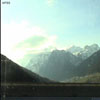 I’ve long been under the mindset that "post rock" is a euphemism for "prog rock." Just like "industrial" began to mean "synth pop with distortion" circa 1983. Not that there's anything wrong with prog rock, who doesn’t love a guy in a cape behind a battery of synths that look like they could have landed the Apollo. Apse are definitely in this genre and for the most part they do pretty well, though I wish this would have been an instrumental album.
I’ve long been under the mindset that "post rock" is a euphemism for "prog rock." Just like "industrial" began to mean "synth pop with distortion" circa 1983. Not that there's anything wrong with prog rock, who doesn’t love a guy in a cape behind a battery of synths that look like they could have landed the Apollo. Apse are definitely in this genre and for the most part they do pretty well, though I wish this would have been an instrumental album.
Consisting of a selection of full length tracks and short instrumental segue pieces, Eras is an interesting combination of vaguely 1960s surf guitar, heavily processed percussion, tons of effects, and lots of dramatic flourishes. The opening "Cyd" layers noise drenched bass and guitar over a simple processed drum loop. For the most part, it is one of the most simple pieces on here.
"Up in the Eaves" leans heavily on the "electronica" end of the spectrum, rhythmically. It takes an old school drum and bass skittering rhythm and requisite synth work with untreated guitar elements, along with buried and heavily effected vocals. "Shining Black" has a similar electronic underpinning, a clanky loop of digital percussion that goes along with some very 1960s pop bass guitar work.
Both "Ark" and "The Letter" propel along a little more rapidly, mixing slightly Asian inspired complex rhythms, the former with chiming guitar and vocals, the latter with an overdriven bassline. "Wishlist" maintains the ethnic percussion sound, but adds in a bit of funk bass, the occasional metallic guitar riff, and some more open and untreated vocals.
When the vocals are not as buried as they are mostly on the A side, it begins to get a bit problematic. They follow the formula of overly falsetto and faux dramatic enunciating that really hinder the tracks they’re prominent on as a whole. It simply feels like a good musical background that’s ruined by shrieking vocals that really pull the focus away from where it should be.
At least side B isn’t entirely fraught with such problems. Opener "Deathless" is a slow, creepy piece of organ drone, electronic atmospheres, and low pulsing bass throbs. The closing "Salt of the Earth" takes a noise background with clangy guitar, and a dense choral vocal that calls to mind early Angels of Light albums with its dark, creepy Appalachian folk inspired sound.
While beautifully packaged and mostly a compelling listen, I can’t help but be sucked out of the album by the tracks that lean heavily on the vocals. Perhaps its personal preference, but at times it sounds like a great band is rehearsing, but some kid comes running into practice from his drama class and tries to become the center of attention. It’s good, but not great.
samples:
Read More
- Administrator
- Albums and Singles
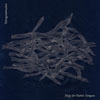 Having collaborated with the likes of Damo Suzuki and members of Zeni Geva and Acid Mother’s Temple, it’s not surprising at all that this is going to be a loud and “out there” sort of project. And it is, traipsing the line between free jazz and noise with reckless abandon. Never leaning fully onto one side or the other, it makes for an interesting dichotomy throughout both studio and live discs.
Having collaborated with the likes of Damo Suzuki and members of Zeni Geva and Acid Mother’s Temple, it’s not surprising at all that this is going to be a loud and “out there” sort of project. And it is, traipsing the line between free jazz and noise with reckless abandon. Never leaning fully onto one side or the other, it makes for an interesting dichotomy throughout both studio and live discs.
Distinguishing them between "live" and "studio" is probably a fruitless endeavor, since the studio work was a four track cassette recording that almost certainly wasn’t the product of pro-tools tweaks and multitracking. However, the two do differ in sense of structure and style, and thus are not redundant in any sense of the word.
Studio disc opener "The Ghosts Won't Starve but We Will Perish" has some traditional jazz drumming with odd chaotic percussive elements, and subtle, restrained horns. Rapid hurdy gurdy and pained horns add to the slow build of chaos. The interplay of instrumentation gets more and more chaotic, dropping out to allow for more electronic instrumentation towards the end.
The shorter "Elegy for Native Tongues" eschews subtle tension for saxophone freak outs and guitar noodling, with shorter rattling drums and stunted guitar playing, ending with blasts of pure electronic noise. "Queen of the Ships" amps up the drums to be more forceful and violent, overshadowing buried guitar chords and standing toe to toe with thick walls of dissonant horn, the sludgy guitar eventually pulling ahead in volume to go with the spastic jazz drumming.
The live disc opens with the more traditional sounds of "Oresteia in One Part," at least in the case of the horns, though the mechanical noises and ominous swells are anything but conventional, and the piece slowly transitions into a more rock framework. "Solve et Coagula" turns up the noise knob a bit, adding more electronics to the stuttering hurdy gurdy that explodes into harsh free jazz akin to the likes of Peter Brotzmann.
Interestingly, both discs close with pieces that are more restrained, at least relatively speaking. "Santa Sangre" places funereal horns over electronic drones that feels more mournful, though still adding in a tiny bit of chaos. The last live track, "Los Heraldos Negros," varies the tempo throughout and still speeds up at the end, but even with the abrasive guitar it remains more relaxed than the previous two.
This set manages to capture the best elements of the esoteric world of "free music" without succumbing to the subgenre's tendency to become simply a catalog of random sounds without much focus. Instead it keeps the free jazz propulsion and a bit of good ol' rock & roll to keep it on track.
samples:
Read More
- John Kealy
- Albums and Singles
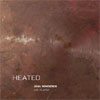 These two releases by the Norwegian artist are her first releases despite a long career focussed on sound installations (although she has released work on compilations and worked with Chris Watson and Sigur Rós on field recordings for their Heima movie). A short live CD and a 7” single, they are not exactly meaty but the material included is strong despite the brevity of most of the tracks. The recordings are crystal clear and manipulated beautifully; the two discs are truly remarkable.
These two releases by the Norwegian artist are her first releases despite a long career focussed on sound installations (although she has released work on compilations and worked with Chris Watson and Sigur Rós on field recordings for their Heima movie). A short live CD and a 7” single, they are not exactly meaty but the material included is strong despite the brevity of most of the tracks. The recordings are crystal clear and manipulated beautifully; the two discs are truly remarkable.
The two pieces on Heated: Live in Japan are named after their respective performers. The opening piece is a short spoken word piece by Japanese improv musician Tetsuro Yasunaga. Not speaking Japanese, this could be either poetry or simply the artist telling someone that they have parked in the wrong place and were blocking the delivery entrance to the venue. The main piece, “Jana Winderen” sees Winderen create a stunning composition from field recordings made in Greenland, Iceland and Norway. Unlike a lot of similar artists (recording in the same general geographic areas), the sounds Winderen has captured are busy and exciting: stones being rubbed together, unusual water noises and many unidentifiable but deeply textured sounds. She puts them all together in a way that is a delight to the ears and as a result Heated ends up being a fantastic disc. The only problem with it is that the total run time is only just over 25 minutes, I would be happy for it to last much, much longer.
Surface Runoff is a less powerful but equally interesting experience. The two pieces are very similar to the work of the aforementioned Chris Watson (as in it sounds like nature, not that she is aping Watson). “Drift” is the sound of many rivers combined into a gushing torrent (that sounds strangely like the sea). On the other side is “Mae Taeng” is a extraordinary recording of aquatic wildlife in Thailand. The shrimp in particular are worth the price of this 7” alone, the crackling sound of their claws fills the room in the way that only the likes of Merzbow can usually achieve (accordingly, swarms of shrimp make the loudest sound in the ocean, managing 246dB!).
From these two releases it is clear that Winderen is not only skilled at creating good music out of natural sources but that her ability to capture these amazing sounds is stellar. Field recordings are an area I adore and I will eat up even the roughest recording of an interesting phenomenon; when I get to hear such vivid recordings I must say I am mightily impressed. With any luck, she will not be long bringing out some more substantial releases.
Read More
- Administrator
- Albums and Singles
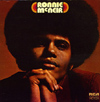 Not quite a lost classic and hardly considered a hit in its own time, this accomplished solo debut from an enduring talent is not some mere soul curio. Unlike records rereleased to satisfy some obsessive collectors' lust for digging up obscure R&B regardless of true quality, this album succeeds on its own merits and the potency of its performances.
Not quite a lost classic and hardly considered a hit in its own time, this accomplished solo debut from an enduring talent is not some mere soul curio. Unlike records rereleased to satisfy some obsessive collectors' lust for digging up obscure R&B regardless of true quality, this album succeeds on its own merits and the potency of its performances.
Ronnie McNeir may not be a household name even among R&B fans, yet those same soul lovers might discover his name repeatedly in the liner notes of some of their favorite albums. Since his youthful beginnings, he has built an impressive career, arranging and recording with Smokey Robinson, Teena Marie, former Temptations Eddie Kendricks and the inimitable David Ruffin, as well as The Four Tops, in which McNeir has been a full-time member for much of the past decade. Despite his age, McNeir already had notable credits under his belt having served as musical director for singer Kim Weston, whose husband William "Mickey" Stevenson served an executive producer on this album.
The overarching and presumably somewhat autobiographical theme grapples with the death and subsequent rebirth of a romantic relationship, replete with segues of staged conversations had by the reunited couple ("In Summertime" opens with one such example and unexpectedly carries it deeper into the song). Recorded when he was only 22, McNeir's bold attempt to create a conceptual soul opera with his first full-length album seems too ambitious given his youth. Truth be told, more mature soulsmiths have fared better in this terrain, not the least of which being the great Marvin Gaye with 1978's unparalleled benchmark Here, My Dear. Nonetheless, the superb performances on Ronnie McNeir from talented session players of the day along with those of the album's prodigious namesake negate the dubiousness of its lofty objectives.
The album starts strong with "Extra Extra," a snappy number tapping into one of the standard soul lyric templates, with McNeir bitterly bemoaning the theft of his woman's affections by another man—a friend and confidant at that. Loosely framing this tragic state of affairs as newsworthy, the titular gimmick surprisingly works, though the peppy groove deserves at least some credit. However, things begin to get even more interesting by the second track, "Daddy's Coming Home," which shifts attention from lamenting the loss a lover to trying to explain the situation to the product of their union: his son. McNeir acknowledges his roots in subtle ways without diversifying the overall vibe here too dramatically. The upbeat and funky "Trouble's A Loser" hints at a bluesy heritage while "I'm So Thankful" veers dangerously almost blasphemously close to gospel territory with its trio of female vocalists carrying the handclap-laden chorus.
Originally released via RCA Victor, this long unavailable record should not be confused with his hard-to-find 1975 self-titled effort for Motown's Prodigal sublabel. Since first hearing the former, I've started examing my record collection for McNeir contributions based on the strength of this one, already finding no small delight in discovering that he (along with "quiet storm" pioneer Leon Ware) provided backing vocals to much of David Ruffin's underrated Gentleman Ruffin. Though not packed with instantly memorable singles, Ronnie McNeir is a soulful grower of an album, a celebration of mutual love rediscovered, ideal for the other 364 days of the year that aren't Valentine's Day.
samples:
Read More

